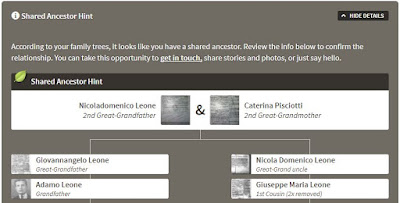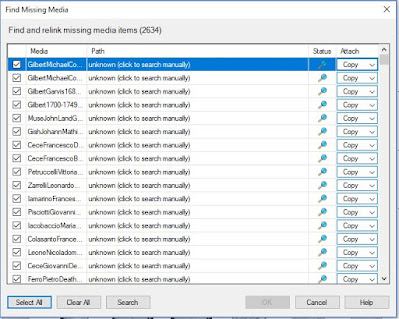Each time I log into ancestry.com, I see a short list called "Recent Member Connect Activity". It shows me when someone has saved one of my images to their own tree.
Most of the images in my family tree are census forms, ship manifests and vital records. I downloaded most of them from Ancestry and attached them to my tree.
I don't mind if someone grabs those images for their own use. But I do like to see if I agree with them.
One woman borrowed my grandfather's immigration record and turned him into her uncle. He was not her uncle. That careless theft of my grandfather is the motivation for my blog. I want us to be more careful, methodical and scientific in our genealogy research.
One of today's "Recent Member Connect Activity" notifications is a possible missing link for me.
 |
| If this person has done his research well, we are third cousins once removed. |
You see, my AncestryDNA match list includes a man called Lou. The same Lou borrowed some of my images. Maybe he had extra time during the holidays to work on his tree. Ancestry.com analyzed our trees and determined we are third cousins once removed.
My next step is to see for myself that his mother really is part of my Leone family. I'll do this by taking the basic information from his public tree and tracking down the proof on my own.
For example, I'll search for documents showing her parents' or siblings' names. If I find that proof, then I will agree with Lou.
At that point, I will contact him so we can work together. If he's correct, he will provide me with a new branch. I've documented my Leone family back about eight generations. So if this works out, Lou has a shipload of ancestors to import from my family tree.
People who don't want to pay for genealogy subscriptions seem to dislike Ancestry.com. But their constant advertising has exploded the number of people enjoying genealogy.
The more people there are working on their tree, the more people we have to share our finds with, and to gain from.
Whichever service you use, be sure to reach out to others and learn from each other.









